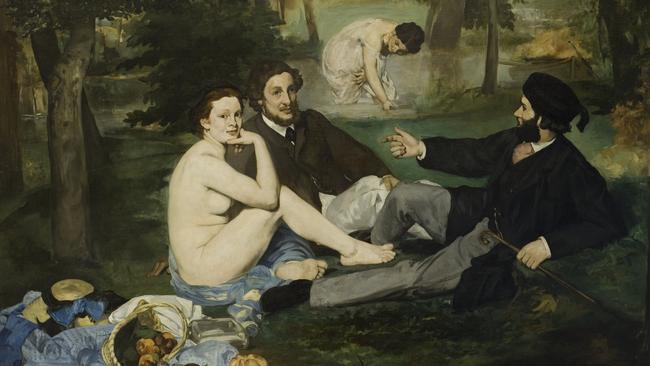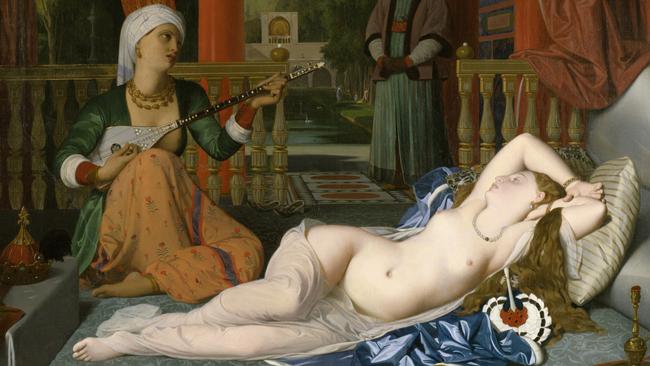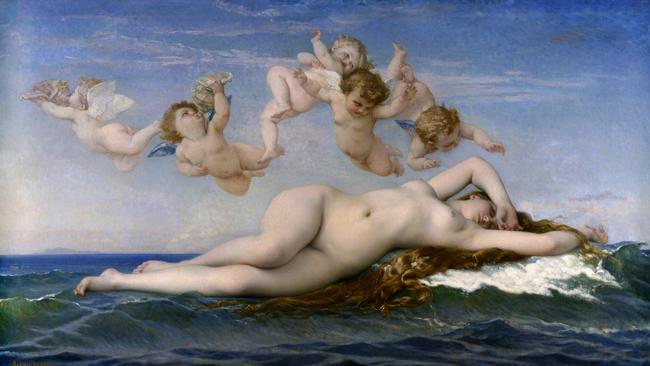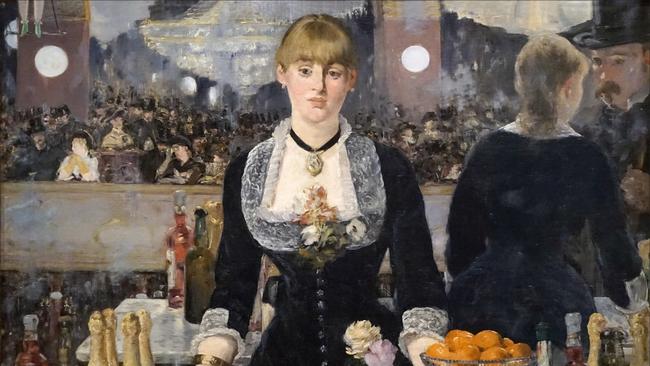Eros in Art, Part 16: Realism
Manet’s paintings of sexual life in Paris were discomforting for many.

The revolution – or more properly, riots of July 1830 – provoked the abdication of Charles X and placed Louis-Philippe, known as the “bourgeois king” because of his embrace of the British style of constitutional monarchy, on the throne of France. The “July monarchy” endured until the revolts in 1848, a year in which political instability, fuelled by both nationalist and socialist agitation, erupted all over Europe.
Faced with renewed riots in February, Louis-Philippe, too, chose to abdicate without violence but when left-wing disturbances persisted and even grew worse, the new republican government did not hesitate to use the army, under General Cavaignac, to suppress the rioters in June. Prince Louis-Napoleon, nephew of the Emperor Napoleon, became president in December and after a coup in 1851 had himself elected emperor in a plebiscite. The Second Empire lasted 20 years, until the Franco-Prussian War in 1870-71, when Napoleon became collateral damage in Bismarck’s unification of Germany under Prussian leadership.
These four decades represented an important period of reconstruction and development in post-Napoleonic France. Algeria was annexed from 1830, finally putting an end to the Islamic piracy that had plagued Mediterranean shipping for centuries; in 1860, Napoleon III helped the Kingdom of Sardinia overcome the Austrians and unify Italy. Less happily, he subsequently (1864) installed a Hapsburg prince as Emperor of Mexico; but the rapidity of the French defeat by the Prussians in 1870 was almost completely unexpected.
The French economy became increasingly industrialised over these years, especially during the Second Empire, and the city of Paris was boldly redesigned by Baron Haussmann during the same period, creating the network of vast boulevards that served both to ease congestion and to prevent future insurrectionists from blockading narrow streets as they had in 1830 and 1848. The network of boulevards was complemented by the less-visible networks of shopping arcades celebrated by Walter Benjamin, who called Paris the capital of the nineteenth century.
Although the new railways allowed Parisians to escape to the country, life became inexorably more urban, crowded and anonymous, and all of these experiences are reflected in contemporary art and literature. A poem by Charles Baudelaire, for example, is addressed to a passer-by and imagines what could have been between two strangers who will never meet again. Other poems reflect on the experience of old men and women who were once young and beautiful, or on the lives of the poor and the alienated. The city is a place of opportunity but also of loneliness, misery and vice.
Baudelaire was not only the greatest French poet of the century, but France’s most insightful art critic, who covered the Salons of 1845, 1846 and 1859 as well as the art section of the Exposition Universelle of 1855, France’s reply to London’s Great Exhibition of 1851. One of his best-known expressions was “the heroism of modern life”, but this can only be properly understood in connection with his conception of the imagination as “the queen of truth”. What he means is that heroic and tragic themes can be found hidden under the apparent banality of modern urban life, but only if we look at life through the special lens of imagination.
And this in turn explains something he says in his review of the Exposition – that although Gustave Courbet, with whom he had been friendly, and Ingres were both outstanding artists, they were each engaged in a “war on imagination”. Courbet shared Baudelaire’s interest in erotic themes, including lesbianism, but a work like Le Sommeil (1866) is both literally sensual and dully literal, compared to his own poems on the subject, which ponder the mystery of transgressive desire.
The same indeed could be said of Courbet’s most notorious erotic painting, if indeed it can be called erotic, L’Origine du monde (1866), painted for the Ottoman diplomat Khalil Bey and still unsuitable for publication in a paper with a general readership. At the other extreme from Courbet’s almost gynaecological explicitness, Ingres’ nudes, for all their formal perfection, are both suggestive and in a sense evasive. This is particularly true of Odalisque with Slave (1840); in his great Baigneuse de Valpincon (1808), on the other hand, he had made a virtue of this very reticence.

The importance Baudelaire attached to the imagination explains why he identified Romanticism with modern art. Courbet considered himself a Realist and called his private exhibition at the 1855 Exposition the “Pavillon du realisme”. But his work has affinities with romanticism, and much of it is more rural than urban. It was his younger contemporary Edouard Manet who brought a “realist” eye to bear on sexual life in the modern city.
Manet is particularly interested in prostitution, as manifested both formally in the countless brothels of Paris and informally in the working-class girls who served as the mistresses of the well-to-do young bourgeois men – whose future wives were being raised under careful supervision and were inaccessible before marriage.
It is important to recognise, however, that Manet’s work is never moralistic or preaching, unlike so much Victorian genre painting; he himself had a working-class mistress, Victorine Meurent, who was also the model for many of his most famous compositions. He is not outraged, either by sin or by social injustice; he is simply concerned to reveal a truth that is brushed under the carpet or ignored for the sake of the appearance of respectability.
Le Dejeuner sur l’herbe, painted in 1863 and exhibited the same year in the Salon des Refuses, is a fascinatingly complex work. On the face of it, we are confronted by a naked woman having a picnic with two well-dressed men, in an arrangement that somehow feels at once natural and carefully staged. An unsophisticated contemporary might find the image shocking and even provocative, especially a member of the uneducated but moralistic middle class audience that was expanding with the economic growth of the time.
The painting is almost like a trap for such a viewer; a more visually literate one would recognise a composition borrowed from Marcantonio Raimondi’s engraving after Raphael of The Judgement of Paris (c. 1515), while the surprising juxtaposition of clothed men and naked women comes from Giorgione’s Le Concert Champetre (c. 1509). These impeccable credentials underwrite Manet’s own painting but perhaps also invite the audience to reflect again on the canonic images that habit has made seem so harmless.
Something very similar happens with Olympia, also painted in 1863, but first exhibited in the Salon of 1865. The canvas met with a hostile reaction; perhaps most surprisingly, the figure was criticised for being appallingly ugly, even for resembling a corpse. There is little doubt that the ugliness that critics saw in the painting was really a kind of projection of the moral anxieties they felt before the subject.
Those anxieties had nothing to do with the model’s nakedness; the Salon was full of nudes, including Cabanel’s The Birth of Venus (1863), which today graces the label of the Santa Vittoria mineral water bottle. Cabanel’s painting is an example of the decline of late academic painting as it repeated the bland formulas of Neo-classicism: the model is painted so literally that we can almost see the box she was lying on, but at the same time she is plucked, airbrushed and polished into breathtaking blandness.

Cabanel’s painting is thus not only superficial and unimaginative, but also combines prurience and prudery in a way that epitomises the French version of what in England would be called Victorian culture. And yet it was not only perfectly acceptable but deemed a painting of sufficient merit – or appeal – to be acquired for the Imperial collection.
Manet’s Olympia was controversial not because she was naked but because she was not naked enough, not stripped of the signs of the same profession that Cabanel’s model probably shared when she was not posing for painters. The very fact that Olympia is still wearing shoes, a choker and other ornaments removes her from the neutrality of the nude and emphasises her nakedness, to recall Kenneth Clark’s famous distinction in The Nude (1956). And other elements of the composition, including her pose and the presence of her maid holding a bunch of flowers that an admirer has brought, make it clear that she is a courtesan of the higher class.
Here, too, Manet could cite classic precedents, above all Titian’s Venus of Urbino (1538), of which he had even made an oil sketch copy, and more recently Goya’s Nude Maja (1800). But none of this – again over the heads of most of his middle-class viewers – could mitigate the harsh and mercenary gaze with which the woman looks straight at us, effectively putting us in the place of her client.
This must have been particularly embarrassing to many men who were visiting the exhibition with their wives, who found themselves rudely confronted with an aspect of life which they knew about in principle, but never spoke of and preferred not to think about. Those who did recognise the artist’s learned allusions could admire the way he had replaced the erotic gesture of the hand in the original with a firm gesture of closure: with Olympia, neither charm nor flirtation is free. And, of course, they could reflect that Titian’s Venus, despite her courtesy title, was undoubtedly a well-to-do courtesan in her own day.

Manet’s last painting on this sort of subject is the late Bar at the Folies-Bergere (1882), which was then a relatively new establishment in Montmartre, the pleasure district situated just outside the city limits of Paris. At first sight the picture seems to show a barmaid standing wearily behind her bar, surrounded by bottles and a dish of oranges, with another waitress behind her and a crowd of figures in the distance.
Then we realise that she is standing before a mirror, and that everything that appears to be behind her is actually in front of her. Manet takes liberties with perspective to combine a full-face view of the barmaid with an oblique view of the reflection, so that the figure who seems to be behind her is really her again, seen from the back. And this back view reveals the real, but not immediately obvious, subject of the painting.
We imagine that she is staring into open space, but the reflection shows that there is in fact a man leaning across the bar, his face very close to hers; disconcerting because our own viewpoint is much further away. He leans in close, asking if he can meet her after her shift; he is not brutal, rather almost diffident. She stares at him in blank resignation; we are not put on the spot as we were in Olympia, but we are better able to empathise with the girl’s vulnerability, and the inner numbness with which she anticipates yet another evening with a stranger.


To join the conversation, please log in. Don't have an account? Register
Join the conversation, you are commenting as Logout